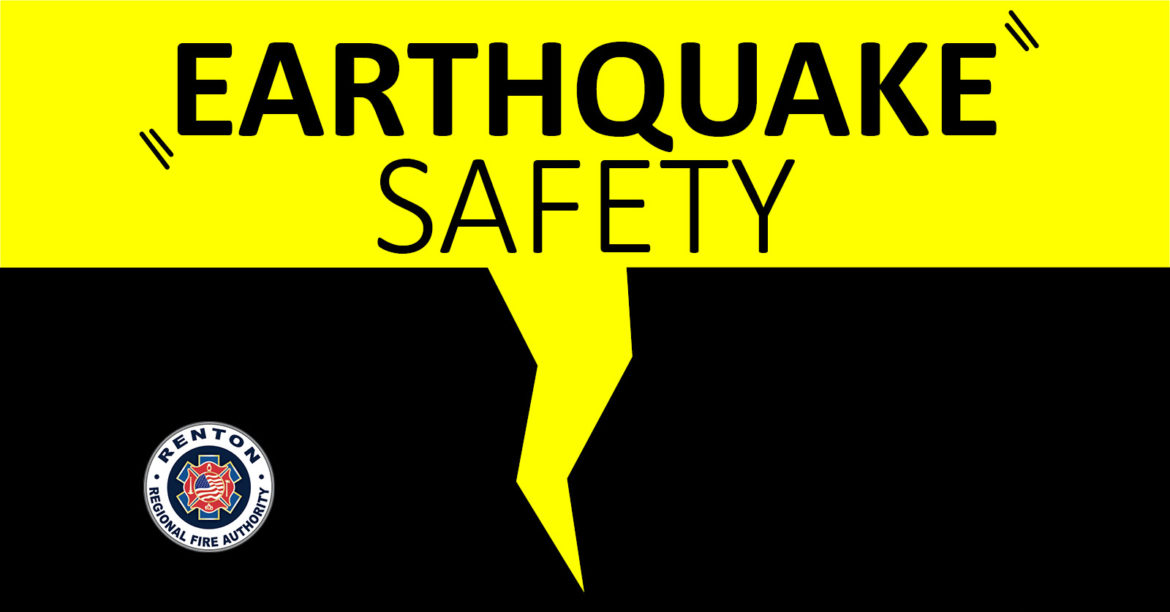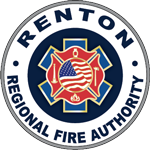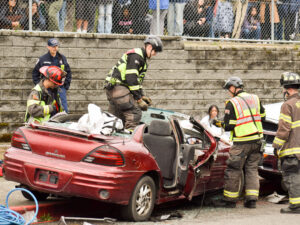
The Renton RFA would like to spend some time this month to focus on earthquake risk and preparedness. The Puget Sound region is seismically active, with hundreds of earthquakes occurring every year. Most of these earthquakes are so small they can only be detected by sensitive instruments. However, damaging earthquakes have occurred in this region during the past 130 years.
We have two faults that present a significant earthquake danger to our area. They are the Seattle Fault and the Cascadia Subduction Zone. The 2001 Nisqually Quake was a result of activity on the Seattle Fault line. The Cascadia Subduction Zone is a source of historically large earthquakes greater than 8.0 in magnitude.
With very large earthquakes, the ground can shake for as much as five minutes. The prolonged shaking causes much more extensive damage than shorter earthquakes. There are many things you can do to be prepared for an earthquake in addition to taking some general emergency preparedness steps. The danger and risks of earthquakes can be reduced if people know what actions to take before, during and after an earthquake.
Before An Earthquake
Check for hazards in the home and office:
- Make sure shelves are secure and designed with latching doors or raised edges to prevent objects from falling.
- Top-heavy furniture and equipment must be bolted to walls or floor.
- Store breakables and heavy objects on lower shelves.
- Overhead lights, heavy artwork, and mirrors need to be anchored.
- Store flammable liquids in flammable liquids storage cabinets.
Identify safe places indoors and outdoors:
- Under sturdy furniture such as a heavy desk or table.
- Against an inside wall.
- Away from glass that could shatter or heavy bookcases or furniture that could fall over.
- Have disaster supplies on hand or a disaster kit available.
During An Earthquake
If you are indoors:
- Stay indoors!
- DROP, COVER and HOLD ON! Drop to the ground; take cover by getting under a sturdy table, bench or desk and hold on. If there isn’t a table or desk near you, cover your face and head with your arms and crouch down into a ball next to an interior wall. Move away from windows that may break and furniture or large objects that could fall over.
- Be aware that the electricity may go out and fire alarms and sprinkler systems may activate.
- If you are in bed stay there! Hold on and put a pillow over your head for protection.
- If you are in a theater or stadium, stay in your seat or get under it if possible, and protect your head with your arms. Do not try to leave until the shaking is over.
- If you are in a crowded room or public place, do not rush for exits. Move away from display shelves holding objects that could fall on you and “drop, cover and hold.”
- Do not use elevators. Use stairs instead.
If you are outdoors:
- Stay outdoors!
- Move to an open area away from trees, buildings, utility poles and lines, or signs.
- If you are in a downtown area, on a sidewalk near a tall building, get inside the building’s lobby to protect yourself from falling bricks, glass or other debris.
- Greatest danger exists directly outside buildings at exits and alongside exterior walls.
If you are driving:
- Pull to the side of the road as quickly as possible.
- Keep away from overhead hazards such as trees, buildings, utility poles and lines, signs, and bridges.
- Stay in the vehicle until the shaking stops
After An Earthquake
- Check yourself and those around you for injuries.
- Evaluate for yourself, or wait for instructions from your Building Coordinator, to determine if evacuation is necessary.
- If the building seems largely unscathed, stay where you are.
- If there are noticeable cracks in the wall, windows are broken, or you can smell natural gas (rotten eggs), then proceed with evacuation protocols.
- If you need to evacuate, collect all personal belongings to take with you. Look for signs of building damage or for persons who are injured or trapped, on your way out. Watch for falling objects as you leave the building.
- Be prepared for aftershocks.
- Go to your department Evacuation Assembly Point, tell your supervisor or department floor warden that you are out of the building and report injured or trapped persons and any signs of building damage you observed.
- Turn on a battery-powered or vehicle radio if available for information.
- If possible, do not use the phone for local calls, except emergencies, during the first 15-30 minutes after the earthquake. Overloading the phone system with calls may delay the delivery of emergency assistance.






